Klara Nahrstedt
VTool-R1: VLMs Learn to Think with Images via Reinforcement Learning on Multimodal Tool Use
May 25, 2025Abstract:Reinforcement Learning Finetuning (RFT) has significantly advanced the reasoning capabilities of large language models (LLMs) by enabling long chains of thought, self-correction, and effective tool use. While recent works attempt to extend RFT to vision-language models (VLMs), these efforts largely produce text-only reasoning conditioned on static image inputs, falling short of true multimodal reasoning in the response. In contrast, test-time methods like Visual Sketchpad incorporate visual steps but lack training mechanisms. We introduce VTool-R1, the first framework that trains VLMs to generate multimodal chains of thought by interleaving text and intermediate visual reasoning steps. VTool-R1 integrates Python-based visual editing tools into the RFT process, enabling VLMs to learn when and how to generate visual reasoning steps that benefit final reasoning. Trained with outcome-based rewards tied to task accuracy, our approach elicits strategic visual tool use for reasoning without relying on process-based supervision. Experiments on structured visual question answering over charts and tables show that VTool-R1 enhances reasoning performance by teaching VLMs to "think with images" and generate multimodal chain of thoughts with tools.
ACT360: An Efficient 360-Degree Action Detection and Summarization Framework for Mission-Critical Training and Debriefing
Mar 17, 2025Abstract:Effective training and debriefing are critical in high-stakes, mission-critical environments such as disaster response, military simulations, and industrial safety, where precision and minimizing errors are paramount. The traditional post-training analysis relies on manually reviewing 2D videos, a time-consuming process that lacks comprehensive situational awareness. To address these limitations, we introduce ACT360, a system that leverages 360-degree videos and machine learning for automated action detection and structured debriefing. ACT360 integrates 360YOWO, an enhanced You Only Watch Once (YOWO) model with spatial attention and equirectangular-aware convolution (EAC) to mitigate panoramic video distortions. To enable deployment in resource-constrained environments, we apply quantization and model pruning, reducing the model size by 74% while maintaining robust accuracy (mAP drop of only 1.5%, from 0.865 to 0.850) and improving inference speed. We validate our approach on a publicly available dataset of 55 labeled 360-degree videos covering seven key operational actions, recorded across various real-world training sessions and environmental conditions. Additionally, ACT360 integrates 360AIE (Action Insight Explorer), a web-based interface for automatic action detection, retrieval, and textual summarization using large language models (LLMs), significantly enhancing post-incident analysis efficiency. ACT360 serves as a generalized framework for mission-critical debriefing, incorporating EAC, spatial attention, summarization, and model optimization. These innovations apply to any training environment requiring lightweight action detection and structured post-exercise analysis.
Generative Active Adaptation for Drifting and Imbalanced Network Intrusion Detection
Mar 04, 2025



Abstract:Machine learning has shown promise in network intrusion detection systems, yet its performance often degrades due to concept drift and imbalanced data. These challenges are compounded by the labor-intensive process of labeling network traffic, especially when dealing with evolving and rare attack types, which makes selecting the right data for adaptation difficult. To address these issues, we propose a generative active adaptation framework that minimizes labeling effort while enhancing model robustness. Our approach employs density-aware active sampling to identify the most informative samples for annotation and leverages deep generative models to synthesize diverse samples, thereby augmenting the training set and mitigating the effects of concept drift. We evaluate our end-to-end framework on both simulated IDS data and a real-world ISP dataset, demonstrating significant improvements in intrusion detection performance. Our method boosts the overall F1-score from 0.60 (without adaptation) to 0.86. Rare attacks such as Infiltration, Web Attack, and FTP-BruteForce, which originally achieve F1 scores of 0.001, 0.04, and 0.00, improve to 0.30, 0.50, and 0.71, respectively, with generative active adaptation in the CIC-IDS 2018 dataset. Our framework effectively enhances rare attack detection while reducing labeling costs, making it a scalable and adaptive solution for real-world intrusion detection.
Cache-of-Thought: Master-Apprentice Framework for Cost-Effective Vision Language Model Inference
Feb 27, 2025Abstract:Vision Language Models (VLMs) have achieved remarkable success in a wide range of vision applications of increasing complexity and scales, yet choosing the right VLM model size involves a trade-off between response quality and cost. While smaller VLMs are cheaper to run, they typically produce responses only marginally better than random guessing on benchmarks such as MMMU. In this paper, we propose Cache of Thought (CoT), a master apprentice framework for collaborative inference between large and small VLMs. CoT manages high quality query results from large VLMs (master) in a cache, which are then selected via a novel multi modal retrieval and in-context learning to aid the performance of small VLMs (apprentice). We extensively evaluate CoT on various widely recognized and challenging general VQA benchmarks, and show that CoT increases overall VQA performance by up to 7.7% under the same budget, and specifically boosts the performance of apprentice VLMs by up to 36.6%.
FDM-Bench: A Comprehensive Benchmark for Evaluating Large Language Models in Additive Manufacturing Tasks
Dec 13, 2024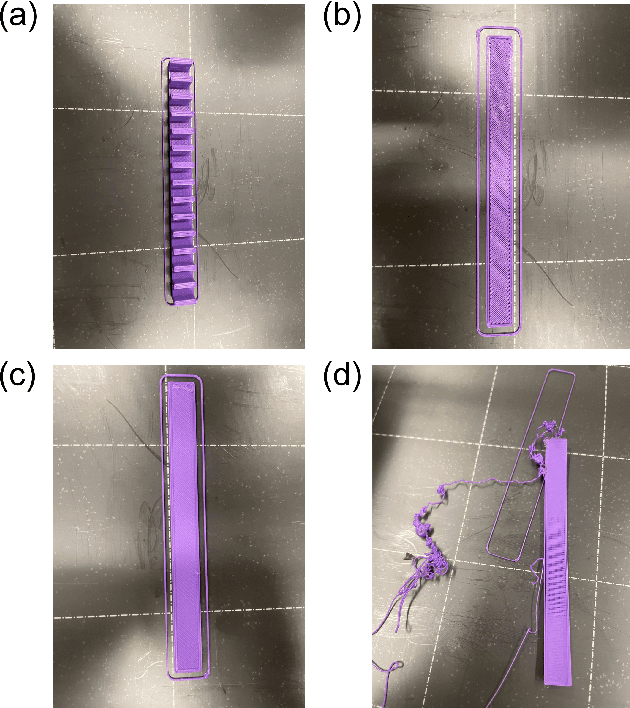

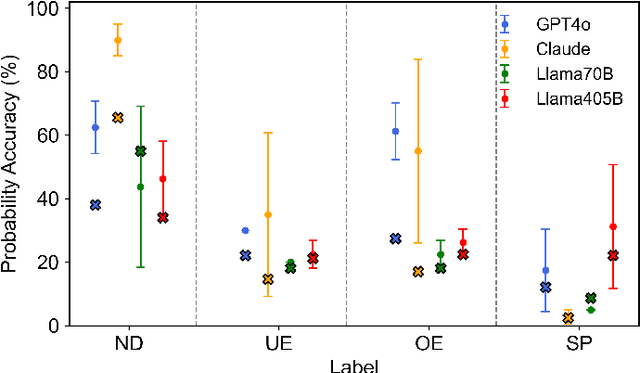
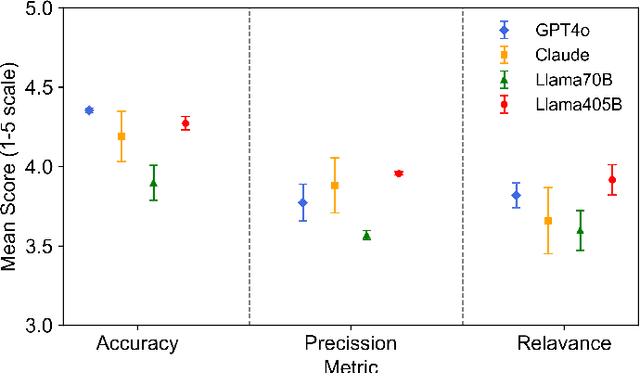
Abstract:Fused Deposition Modeling (FDM) is a widely used additive manufacturing (AM) technique valued for its flexibility and cost-efficiency, with applications in a variety of industries including healthcare and aerospace. Recent developments have made affordable FDM machines accessible and encouraged adoption among diverse users. However, the design, planning, and production process in FDM require specialized interdisciplinary knowledge. Managing the complex parameters and resolving print defects in FDM remain challenging. These technical complexities form the most critical barrier preventing individuals without technical backgrounds and even professional engineers without training in other domains from participating in AM design and manufacturing. Large Language Models (LLMs), with their advanced capabilities in text and code processing, offer the potential for addressing these challenges in FDM. However, existing research on LLM applications in this field is limited, typically focusing on specific use cases without providing comprehensive evaluations across multiple models and tasks. To this end, we introduce FDM-Bench, a benchmark dataset designed to evaluate LLMs on FDM-specific tasks. FDM-Bench enables a thorough assessment by including user queries across various experience levels and G-code samples that represent a range of anomalies. We evaluate two closed-source models (GPT-4o and Claude 3.5 Sonnet) and two open-source models (Llama-3.1-70B and Llama-3.1-405B) on FDM-Bench. A panel of FDM experts assess the models' responses to user queries in detail. Results indicate that closed-source models generally outperform open-source models in G-code anomaly detection, whereas Llama-3.1-405B demonstrates a slight advantage over other models in responding to user queries. These findings underscore FDM-Bench's potential as a foundational tool for advancing research on LLM capabilities in FDM.
Transforming the Hybrid Cloud for Emerging AI Workloads
Nov 20, 2024Abstract:This white paper, developed through close collaboration between IBM Research and UIUC researchers within the IIDAI Institute, envisions transforming hybrid cloud systems to meet the growing complexity of AI workloads through innovative, full-stack co-design approaches, emphasizing usability, manageability, affordability, adaptability, efficiency, and scalability. By integrating cutting-edge technologies such as generative and agentic AI, cross-layer automation and optimization, unified control plane, and composable and adaptive system architecture, the proposed framework addresses critical challenges in energy efficiency, performance, and cost-effectiveness. Incorporating quantum computing as it matures will enable quantum-accelerated simulations for materials science, climate modeling, and other high-impact domains. Collaborative efforts between academia and industry are central to this vision, driving advancements in foundation models for material design and climate solutions, scalable multimodal data processing, and enhanced physics-based AI emulators for applications like weather forecasting and carbon sequestration. Research priorities include advancing AI agentic systems, LLM as an Abstraction (LLMaaA), AI model optimization and unified abstractions across heterogeneous infrastructure, end-to-end edge-cloud transformation, efficient programming model, middleware and platform, secure infrastructure, application-adaptive cloud systems, and new quantum-classical collaborative workflows. These ideas and solutions encompass both theoretical and practical research questions, requiring coordinated input and support from the research community. This joint initiative aims to establish hybrid clouds as secure, efficient, and sustainable platforms, fostering breakthroughs in AI-driven applications and scientific discovery across academia, industry, and society.
Pseudo Dataset Generation for Out-of-Domain Multi-Camera View Recommendation
Oct 17, 2024



Abstract:Multi-camera systems are indispensable in movies, TV shows, and other media. Selecting the appropriate camera at every timestamp has a decisive impact on production quality and audience preferences. Learning-based view recommendation frameworks can assist professionals in decision-making. However, they often struggle outside of their training domains. The scarcity of labeled multi-camera view recommendation datasets exacerbates the issue. Based on the insight that many videos are edited from the original multi-camera videos, we propose transforming regular videos into pseudo-labeled multi-camera view recommendation datasets. Promisingly, by training the model on pseudo-labeled datasets stemming from videos in the target domain, we achieve a 68% relative improvement in the model's accuracy in the target domain and bridge the accuracy gap between in-domain and never-before-seen domains.
UOUO: Uncontextualized Uncommon Objects for Measuring Knowledge Horizons of Vision Language Models
Jul 25, 2024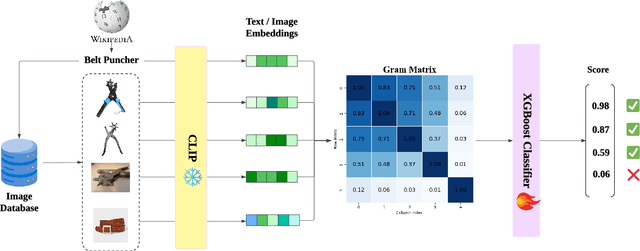

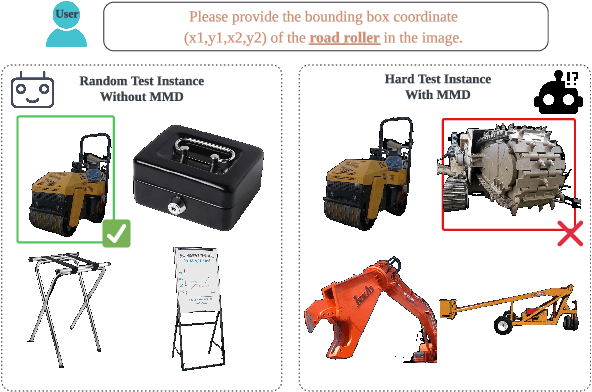
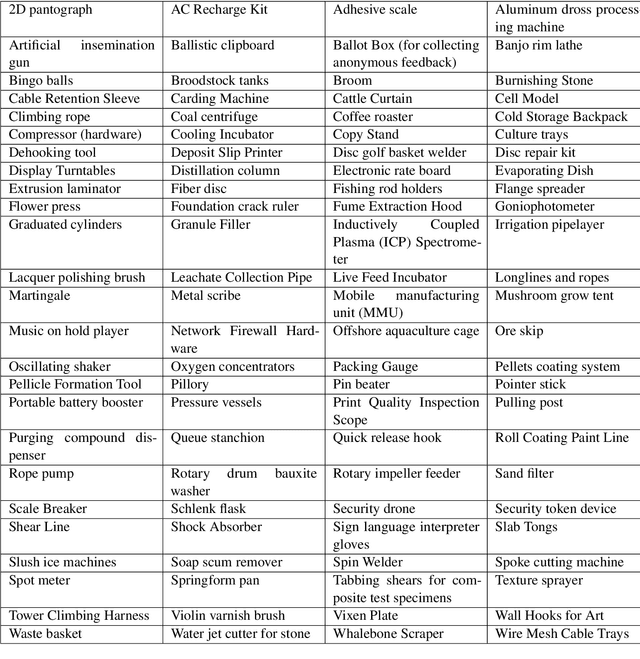
Abstract:Smaller-scale Vision-Langauge Models (VLMs) often claim to perform on par with larger models in general-domain visual grounding and question-answering benchmarks while offering advantages in computational efficiency and storage. However, their ability to handle rare objects, which fall into the long tail of data distributions, is less understood. To rigorously evaluate this aspect, we introduce the "Uncontextualized Uncommon Objects" (UOUO) benchmark. This benchmark focuses on systematically testing VLMs with both large and small parameter counts on rare and specialized objects. Our comprehensive analysis reveals that while smaller VLMs maintain competitive performance on common datasets, they significantly underperform on tasks involving uncommon objects. We also propose an advanced, scalable pipeline for data collection and cleaning, ensuring the UOUO benchmark provides high-quality, challenging instances. These findings highlight the need to consider long-tail distributions when assessing the true capabilities of VLMs.
TraceNet: Segment one thing efficiently
Jun 21, 2024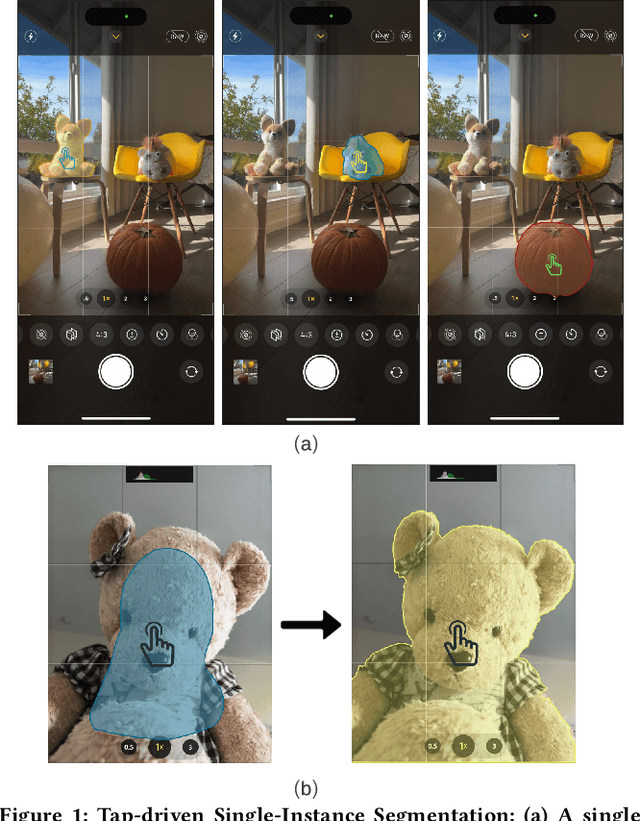
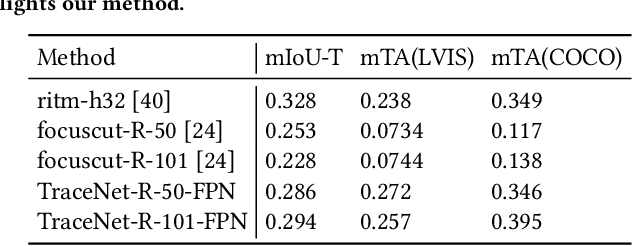
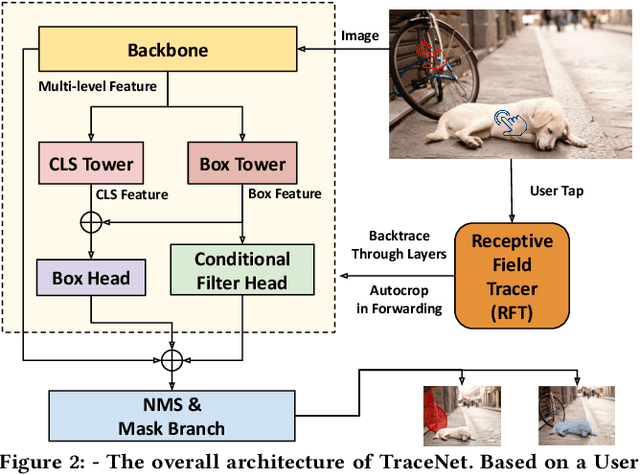

Abstract:Efficient single instance segmentation is essential for unlocking features in the mobile imaging applications, such as capture or editing. Existing on-the-fly mobile imaging applications scope the segmentation task to portraits or the salient subject due to the computational constraints. Instance segmentation, despite its recent developments towards efficient networks, is still heavy due to the cost of computation on the entire image to identify all instances. To address this, we propose and formulate a one tap driven single instance segmentation task that segments a single instance selected by a user via a positive tap. This task, in contrast to the broader task of segmenting anything as suggested in the Segment Anything Model \cite{sam}, focuses on efficient segmentation of a single instance specified by the user. To solve this problem, we present TraceNet, which explicitly locates the selected instance by way of receptive field tracing. TraceNet identifies image regions that are related to the user tap and heavy computations are only performed on selected regions of the image. Therefore overall computation cost and memory consumption are reduced during inference. We evaluate the performance of TraceNet on instance IoU average over taps and the proportion of the region that a user tap can fall into for a high-quality single-instance mask. Experimental results on MS-COCO and LVIS demonstrate the effectiveness and efficiency of the proposed approach. TraceNet can jointly achieve the efficiency and interactivity, filling in the gap between needs for efficient mobile inference and recent research trend towards multimodal and interactive segmentation models.
Federated Transfer Learning with Task Personalization for Condition Monitoring in Ultrasonic Metal Welding
Apr 20, 2024



Abstract:Ultrasonic metal welding (UMW) is a key joining technology with widespread industrial applications. Condition monitoring (CM) capabilities are critically needed in UMW applications because process anomalies significantly deteriorate the joining quality. Recently, machine learning models emerged as a promising tool for CM in many manufacturing applications due to their ability to learn complex patterns. Yet, the successful deployment of these models requires substantial training data that may be expensive and time-consuming to collect. Additionally, many existing machine learning models lack generalizability and cannot be directly applied to new process configurations (i.e., domains). Such issues may be potentially alleviated by pooling data across manufacturers, but data sharing raises critical data privacy concerns. To address these challenges, this paper presents a Federated Transfer Learning with Task Personalization (FTL-TP) framework that provides domain generalization capabilities in distributed learning while ensuring data privacy. By effectively learning a unified representation from feature space, FTL-TP can adapt CM models for clients working on similar tasks, thereby enhancing their overall adaptability and performance jointly. To demonstrate the effectiveness of FTL-TP, we investigate two distinct UMW CM tasks, tool condition monitoring and workpiece surface condition classification. Compared with state-of-the-art FL algorithms, FTL-TP achieves a 5.35%--8.08% improvement of accuracy in CM in new target domains. FTL-TP is also shown to perform excellently in challenging scenarios involving unbalanced data distributions and limited client fractions. Furthermore, by implementing the FTL-TP method on an edge-cloud architecture, we show that this method is both viable and efficient in practice. The FTL-TP framework is readily extensible to various other manufacturing applications.
 Add to Chrome
Add to Chrome Add to Firefox
Add to Firefox Add to Edge
Add to Edge